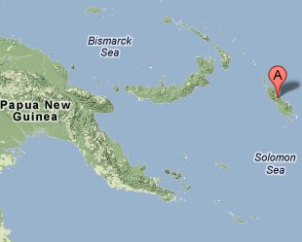
1. Factual background
The company Rio Tinto has an extensive history of conflicts related to human rights violations and environmental damage, and over the years numerous countries have been affected. The case discussed here centres on Bougainville, the largest of the Solomon Islands,[1] where the company began operations in 1960. The case revolves around the Panguna mine and the political awareness generated since the mine was established.
Between 1969 and 1972, the colonial Australian administration leased land on the island to the australian company Bougainville Copper Limited (BCL), a subsidiary of Conzinc Rio Tinto of Australia Ltd (controlled in turn by the British company Rio Tinto Zinc, later renamed Rio Tinto Limited, one of the existing pillars of the company), in which the Papua New Guinean administration was involved.
The company began to occupy adjacent lands in spite of the claims of the landowners, and residents of Bougainville were often forced to relocate or else to flee the island. Very soon thereafter, the residents of Bougainville started to become ill from exposure to the toxins, chemical products, and air pollution produced by the mine. Respiratory ailments such as asthma and tuberculosis became more common, even leading to the death of some patients.
Click here for the factsheet (5 pages): FS_040_Rio Tinto – Papua New Guinea



